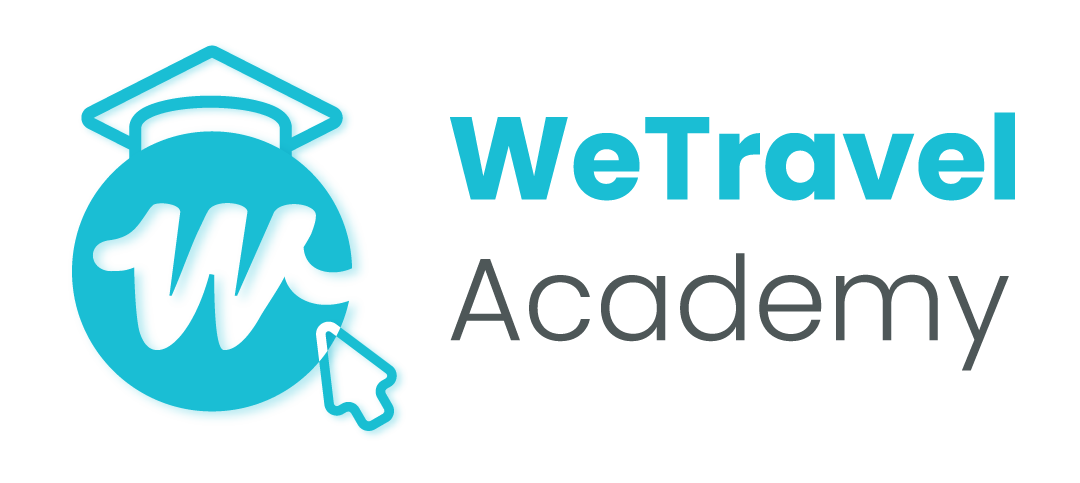The Comprehensive Guide to Manuel Antonio National Park, Costa Rica
Costa Rica is one of our favorite travel destinations. Beautiful coastlines, expansive rainforests, and adventure activities to satisfy even the most daring traveler, what's not to like?
Rainforests cover approximately 6% of the planet’s land surface and are extremely important in the reduction of atmospheric carbon dioxide. Costa Rica, as well as other countries of Central America, holds a tiny bit of them.
If you want to meet and experience the vibes of the rainforest, but at the same time don’t want to lose the connection with civilization, Manuel Antonio is the ideal place for you. It’s located 132 km (82 miles) from the capital city San José, south of the city of Quepos, Puntarenas, right next to the Pacific coast. It's not just a fantastic place for a yoga retreat, but a beautiful place to experience nature too.
Even though the roadsides are crammed with small shops, restaurants, hotels, and occasionally homes of the local people, it’s worth mentioning that Manuel Antonio is not a town or a city. It’s an area that includes a nature reserve – Manuel Antonio National Park - with a highly developed infrastructure around. Thus, it’s quite a tourist hotspot – approximately 150,000 people visit it every year. It’s not only the rainforest that attracts visitors, but also the beautiful beaches and all the fantastic leisure opportunities that bring crowds of people here. It is really a special place.
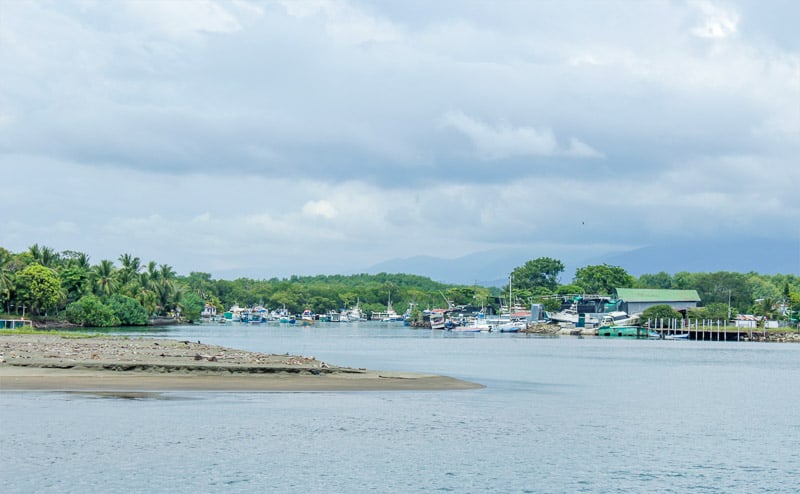
Getting to Manuel Antonio
Getting to Manuel Antonio isn’t complicated at all and it's possible to get there by all means of transportation.
By rental car:
Depending on the traffic and road conditions, the time you might spend driving from San José to Manuel Antonio is around three hours. Driving from San José, take the San José-Caldera Highway (CR27) west toward Orotina. When you pass the toll at Pavón, exit to the Costanera Sur a.k.a. Southern Coastal Highway (CR34). Don’t forget to take local money (colons) to pay in tolls. Before getting to Jacó, you will cross the Tracoles River Bridge. Take time to snap some pictures of the crocodiles that are dozing on the river bank. After driving through Jacó, Manuel Antonio is just an hour drive away down the coast. If you’re still puzzled about getting there by car, use a GPS and navigation app for extra help.
By bus:
If you don’t mind public transport, direct buses from San José leave from Tracopa Terminal at Playa Viquez (Calle 5 and Avenida 20) six times a day – 6 am, 9 am, 12 pm, 6 pm, and 7.30 pm. The bus ride costs 4,520 CRC (around 8 USD) and you can only pay in cash. The bus ride also takes about three hours to arrive at Manuel Antonio. The buses go all the way to the park and you can also ask to drop you off at any hotel along the way.
By shuttle bus:
Some private shuttle companies such as Grayline and Interbus have a door-to-door service between the touristic hot-spots and Manuel Antonio. The buses for Manuel Antonio depart in mornings and afternoons. The ticket prices range from 45-50 USD per person. Although taking a shuttle bus could offer more comfort and privacy, AC and a bilingual driver, the travel time is the same as the direct buses.
By plane:
If you want to save some commuting time and money is not a problem, you can also get to the area by plane. Currently, two companies – Nature Airlines and Sansa Airlines – offer a regularly scheduled air service between San José and Quepos. The flight takes only 30 minutes and costs around 85-120 USD per passenger. Both companies also offer shuttle bus airport transfer services that are coordinated with their flights.
Transportation in the area:
If you’re planning to stay in Manuel Antonio for a couple of days or more, you’ll probably need to get around somehow. There are a lot of taxis nearby and a ride costs approximately 3,500 CRC (8 USD) but the local bus is way cheaper – about 300 CRC. If you like exploring places on a bike, you can rent one under 10,000 CRC (20 USD) per day.
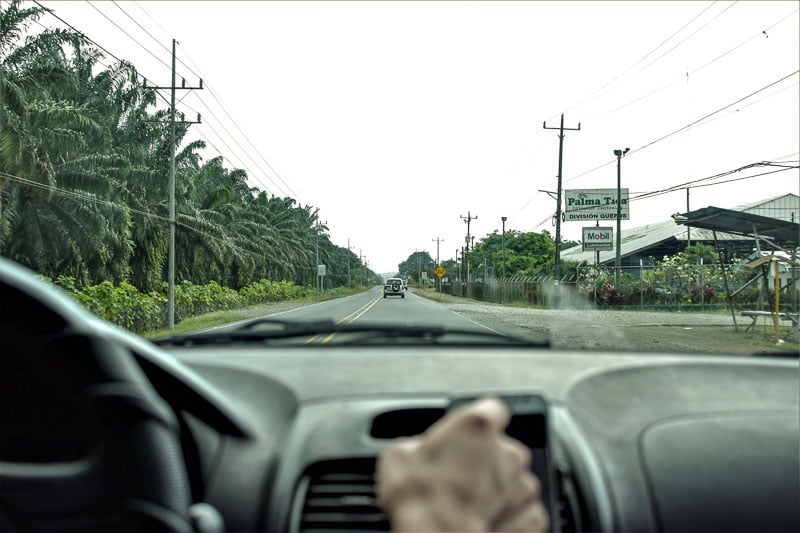
Things to keep in mind before visiting Manuel Antonio National Park
Opening hours
The opening hours of Manuel Antonio National Park – from 7 am to 4 pm - are especially friendly for the morning birds. If you’re a night owl, you will have to try getting up as early as possible to explore the place properly. Note that the park is closed to visitors on Mondays from July 1st to November 30th.
Entrance fee
The entrance fee for foreign visitors is 16 USD for an unguided tour. You can pay with dollars or Costa Rican Colones, as well as a VISA credit card. However, if you want to have a guided tour by a professional with a high-tech telescope for animal spotting, be ready to pay 51 USD for a group excursion or 71 USD for a private one.
Prohibited items
Be aware - the only thing prohibited in the park’s territory are alcoholic beverages. You can bring soda and water with you, as well as other types of food and snacks. Make sure to take all the necessary stuff with you as the ticket is valid for a one-time entrance only. Although there aren’t places to purchase water or food inside the park for reasons such as the impact on nature and cleanliness, there are showers and toilets available in two places.

About Manuel Antonio National Park
Despite Manuel Antonio being the smallest national park in Costa Rica, it’s one of the most popular and most visited parks. In 2011 it was even included in the Forbes Magazine list of the 12 most beautiful natural parks in the world. Manuel Antonio National Park was founded in 1972 to protect the wildlife from the fastly growing construction works in the area, as well as provide local people with access to one of the most beautiful places in the country. 682 hectares (2.6 square miles) of the park’s land preserves a small but remnant piece of the tropical forest that once covered the region, a few white-sand beaches, several islands and rocky headlands surrounded by a large variety of marine life.
For its small size, Manuel Antonio has an extraordinary diversity of wildlife. 184 species of birds, including toucans, woodpeckers, hawks, motmots, and turkey vultures, can be spotted here. There are 109 species of mammals, fifty-nine of which are bats. Sloths like brown-throated three-toed and Hoffmann’s two-toed sloth are a major attraction, as well as monkeys – howlers, white-faced capuchins, and squirrel monkeys. You can come across reptiles such as green iguanas and ctenosaurs (spinytail iguanas). Many species of snakes can be found here, including venomous, so be careful on the trails. Quite often dolphins can be observed near the headlands in the ocean, rarely – whales.

Playa Manuel Antonio
Although there are four beaches in the territory of the park – Playa Espadilla Sur, Manuel Antonio, Playa Puerto Escondido, and Playa Playitas – only the first three are accessible to visitors. The beaches Playa Espadilla Sur and Manuel Antonio are naturally separated from one another by a tómbolo or land bridge connecting the coast to the peninsula beyond, called Punta Catedral.
There are raccoons living near the beach, but it's better to avoid feeding the animals in the park unless you have fruits. Otherwise, the food can be harmful to them. Due to the presence of people, raccoons and monkeys have become so confident that they might not fear to approach you and your things. Do not leave your things and food items unattended here because some of them might end up in the clutches of the animals!
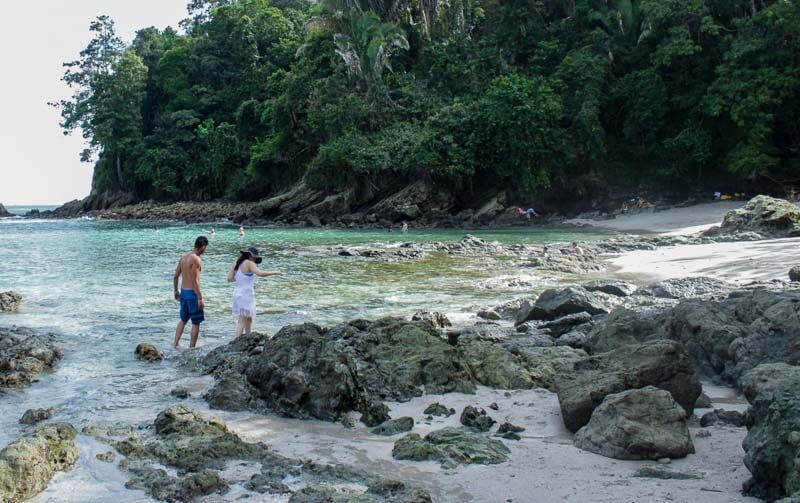
Additional Activities in Manuel Antonio
Just in case you have decided to stay longer in the area, it has a lot of activities to offer for adventurers and peace lovers equally.
Zip-lining
A spectacular way to enjoy rainforests from above. Expert guides will assist you with every step from tucking you into the harness and hooking you onto the cable to helping you stop at the other end. Titi Canopy Tour has a total of 16 platforms, the highest being 90 feet above the ground. The prices range from 60-70 USD.
White water rafting
The class II and III rapids of the river Savegre will definitely boost your adrenaline. Not only you will paddle hard but also see primary rainforests, canyons, and waterfalls, as well as all the beautiful creatures living along the riverside. The prices per person range from 75-110 USD.
Jungle night tour
Take a walk in a private wildlife refuge. Many animals are mostly active or exclusively at night. Once the sun goes down the rainforest turns into a completely different and mysteriously magical world with tree frogs, snakes and other creatures crawling into the darkness. A guided tour costs 45 USD.
Catamaran sailing and snorkeling
This open water tour takes visitors along the coastline to enjoy its mysterious islands, cliffs, and rocky formations, as well as to spot dolphins, migrating whales, manta rays, and sea turtles. The snorkeling takes place in a protected cove in Biesanz Bay where you can swim along colorful tropical fish and coral reefs. This tour includes a full-fledged meal for 80 USD.
Quepos hot springs
One of the top destinations in Quepos is the hot springs. You can not only enjoy natural hot springs with many waterfalls and natural swimming ponds with a hike through the rainforest, but also yoga retreats, fitness, and eco tours. The price for a full day tour is 85 USD.
These are just some of the most popular activities available in Manuel Antonio along with surfing, diving, and a hike in the national park.
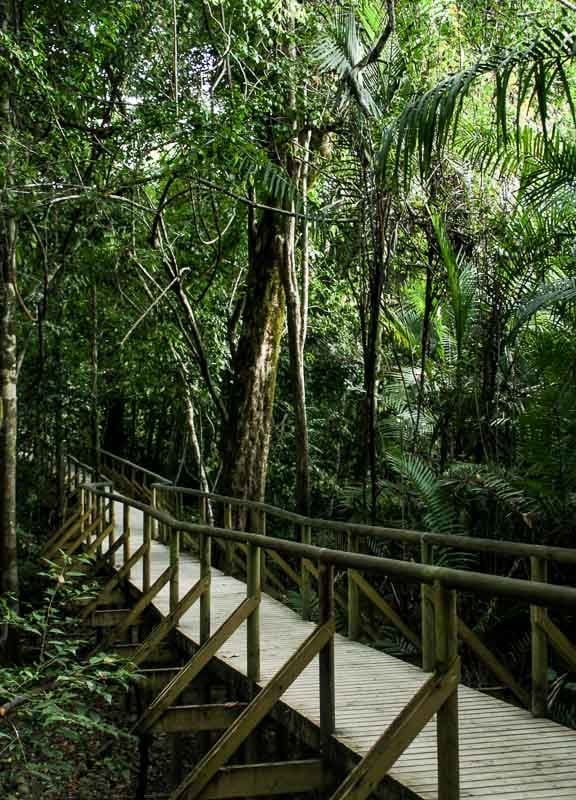
Where to Stay in Manuel Antonio
In the nearby city of Quepos and along the road to the national park there are plenty of hostels and hotels so you won’t have to worry about a place to stay. Instead, you will be overwhelmed by the choices available! In the end, your final choice will greatly depend on your budget and expectations.
Remember that Costa Rica is a seasonal country and rates differ depending on the season. If you’re looking for a room with an AC and an ocean view expect to pay more than 100 USD during the high season. You could also find places on Airbnb under 100 USD that meet these requirements. However, the prices usually drop significantly during the low season.
If you’re on a tight budget then a hostel might be more for you, and there are plenty on offer in Manuel Antonio. Prices range from 12-20 USD for a dorm bed. Although many hostels have breakfast included, they also have an open kitchen space for guests who want to prepare their own meals. Hostels Vista Serena and Backpacker Manuel Antonio are the cheapest options available in the area.
If you want a private room or an apartment, expect to pay from 40-100 USD depending on the season. The choice of hotels is wide, and many of them have pools to lounge at. The most popular budget hotels are Villa Romantica and Jungle Beach Hotel Manuel Antonio.
If you’re not limiting your expenses at all, there are many luxury hotels and villas. Many of them not only offer spectacular ocean views and beautiful surroundings but also – access to private beaches and restaurants. The prices range from 250-1500 USD.

Where to Eat in Manuel Antonio
In Manuel Antonio and Quepos there are as many places to eat as there are hotels! You can find small cozy cafeterias, grill bars, and restaurants that offer local and seafood for affordable prices around 12-20 USD. Among the most popular places that locals recommend are:
- Cafe Agua Azul offering internationally diverse and delicious food and considered one of the best places to eat in Manuel Antonio. Plus it also has a great ocean view.
- Barba Roja is famous for its tasty nachos and view as well, especially during the sunset.
- Emilio’s Cafe provides beautiful views of the national park and ocean, and great organic food in a bohemian-like interior.
If you’re on a tight budget there’s always the option of buying your own food to prepare a meal, especially if you have an open kitchen available at the hostel. Sometimes you can purchase fresh fruits and vegetables from locals who have stands at the roadside. For specific food items, you might have to go back to Quepos.

If you're looking for a vacation in Costa Rica that will give you all the opportunities you could want - from relaxation to adventure and the opportunity to see animals in their natural habitat, within a beautiful rainforest - then a visit to Manuel Antonio could be your next trip!
Check our affordable yoga retreats in Costa Rica to help you with your planning!
New resources, straight to your inbox
We’re committed to your privacy. WeTravel uses the information you provide to us to contact you about our relevant content, products, and services. You may unsubscribe at any time.

